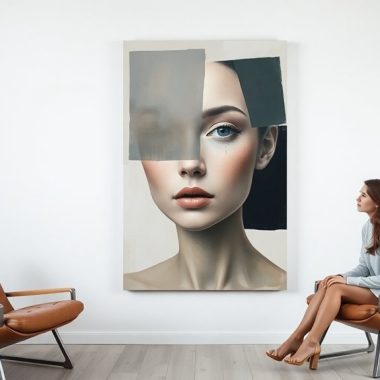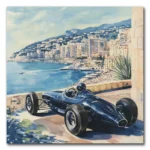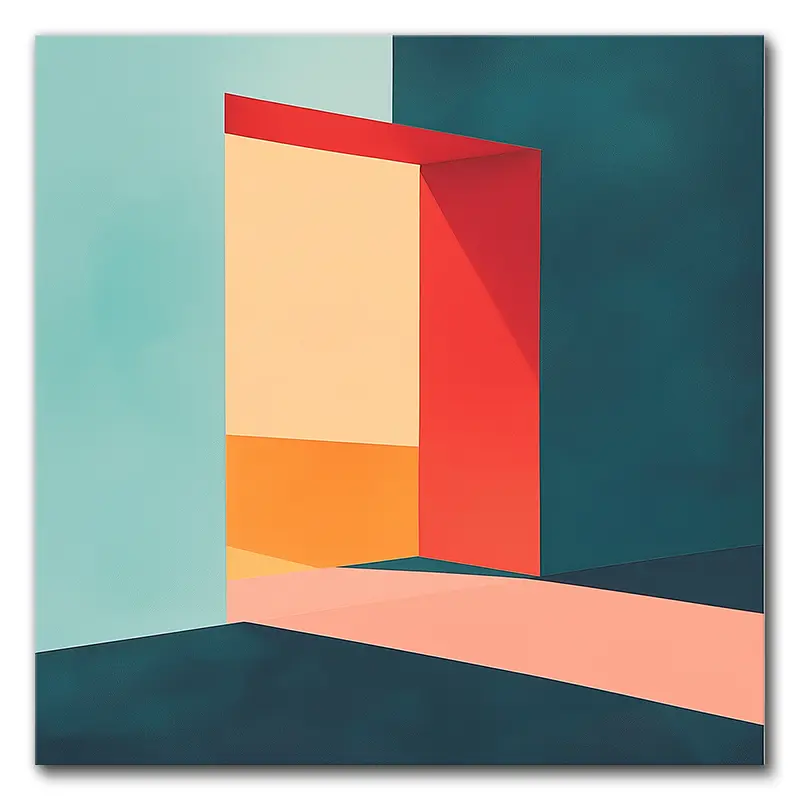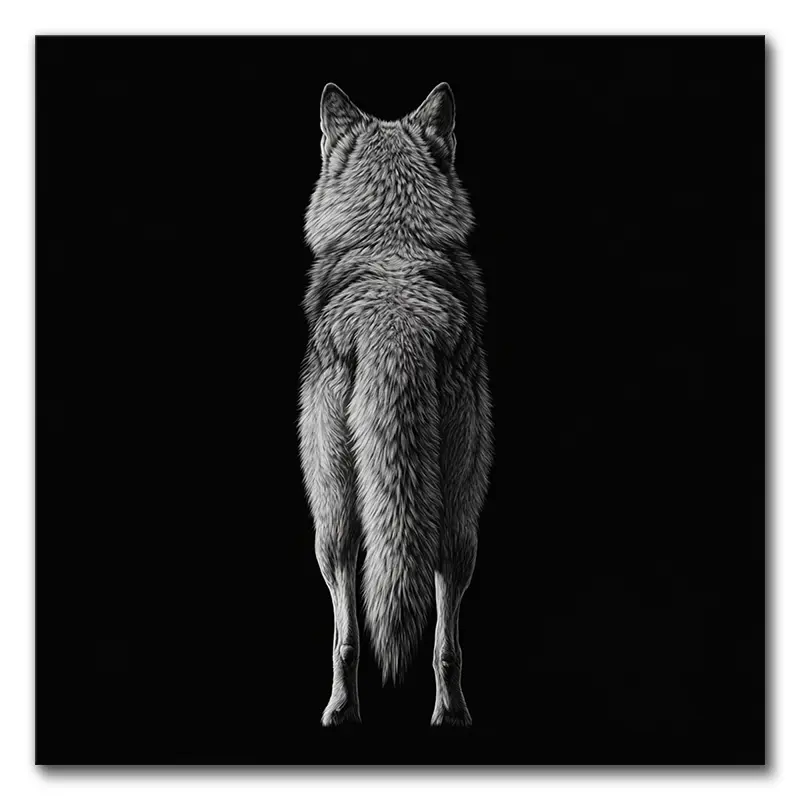If you're exploring canvas art styles, you'll find a fascinating range from realism to abstract forms. Realism captures everyday life with incredible detail, while impressionism focuses on fleeting moments of light and color. Then there's abstract art, which breaks down shapes and perspectives, and cubism that challenges traditional forms. Expressionism emphasizes deep emotional experiences, and surrealism blends reality with dreamlike elements. Each style transforms how you perceive art and expresses complex human experiences. As you uncover these styles, you'll discover the rich narratives and techniques that make each unique—let's continue the journey into this enchanting world!
Realism: A Window to Reality

Realism serves as a window to the everyday lives of ordinary people, emerging in mid-19th century France as a counterpoint to the idealized notions of Romanticism. This movement focuses on accurately depicting daily life and the experiences of the working class.
You'll find that artists like Gustave Courbet and Jean-François Millet prioritized meticulous detail and true-to-life representation, drawing attention to the beauty in ordinary moments.
In Realism, each art painting canvas captures the essence of reality, often showcasing scenes from labor and daily activities. The emphasis on perspective, depth, and texture brings these ordinary subjects to life, creating a near-photographic quality.
Unlike canvas abstract art, which may evoke emotions through non-representational forms, Realism invites you to connect with tangible experiences.
Take a moment to appreciate how Realist artists wielded their brushes. They didn't shy away from the harsh truths of life; instead, they embraced them, portraying the struggles and joys of everyday existence. Their aim was to present life as it truly was, without romantic embellishments.
While Leonardo da Vinci's "Mona Lisa" may be a famous example often associated with the precision of realism, it's crucial to recognize that Realism as a movement sought to expand this idea further into the lives of common people.
Impressionism: Capturing Fleeting Moments

Impressionism is all about capturing those brief, beautiful moments that can slip away before you even notice them.
With techniques like loose brushwork and vibrant colors, artists such as Monet and Renoir transformed everyday scenes into stunning visual experiences.
As we explore the unique styles and methods of these remarkable artists, you'll see how their approach to light and atmosphere still resonates in art today.
Techniques of Impressionism
The techniques of Impressionism revolutionized how artists approached capturing the world around them, emphasizing the beauty of fleeting moments. This movement, which emerged in the late 19th century, showcased loose brushwork and a light color palette, focusing on the essence of scenes rather than precise details.
You'll notice that artists often painted en plein air, or outdoors, enabling them to observe and depict the natural play of light in real-time.
One hallmark of Impressionist paintings is the technique of broken color. Here, colors are applied in distinct, separate strokes, which creates a vibrant, dynamic effect that brings the artwork to life. This method allows for a unique blend of tones that mimics the way our eyes perceive light and shadow.
Impressionist artists, like Monet and Renoir, captured everyday life and nature's beauty, often portraying themes of leisure and the changing seasons. A perfect example is Monet's "Impression, Sunrise," which exemplifies the use of light and color to evoke mood rather than detail.
This marked a significant shift in artistic representation, inviting viewers to experience the world through a new, vibrant lens.
Notable Impressionist Artists
Impressionist artists transformed the art world by capturing fleeting moments with remarkable sensitivity and innovation. Claude Monet, often hailed as the father of Impressionism, mesmerized audiences with his series of water lily paintings, showcasing the ever-changing light in his Giverny garden. You can almost feel the gentle ripple of water as you gaze at his works.
Then there's Edgar Degas, who took a unique approach by focusing on dancers. His artwork, like *The Dance Class*, captures the dynamic energy of performance through unusual viewpoints, making movement tangible and mesmerizing.
Pierre-Auguste Renoir celebrated life's joy, as seen in *Luncheon of the Boating Party*, where vibrant colors depict social gatherings filled with warmth and connection.
Camille Pissarro, recognized as the "dean of Impressionist painters," emphasized light and atmosphere in pieces like *Boulevard Montmartre, Spring*, inviting you to experience the beauty of everyday life.
Finally, Berthe Morisot, the only female founding member, offered an intimate glimpse into domestic life, especially in *The Cradle*, highlighting women's experiences.
Each of these artists contributed uniquely, shaping Impressionism into a vibrant expression of human experience and fleeting beauty.
Abstract and Cubism: Deconstructing Forms

When you look at abstract and cubist art, you're stepping into a world where geometric shapes and multiple perspectives challenge your perception.
This movement not only breaks down forms but also stirs emotions through its unique compositions and color choices.
As you explore iconic works, you'll see how these styles paved the way for modern art, inviting you to appreciate the complex beauty hidden within their chaos.
Geometric Shapes and Perspectives
Exploration of geometric shapes and perspectives reveals the fascinating domains of Abstract and Cubism art styles, where forms are deconstructed to challenge your perception.
In Abstract art, artists like Kandinsky and Pollock emphasize color, shape, and composition, often leaving recognizable forms behind. This approach invites you to experience emotion rather than reality, encouraging a personal connection to the artwork.
Cubism, co-founded by Picasso and Braque, takes this further by breaking down objects into geometric shapes. It presents multiple viewpoints at once, defying traditional depth and perspective.
You'll encounter two main phases: Analytical Cubism, which simplifies subjects into monochromatic forms, and Synthetic Cubism, where collage techniques assemble various elements. This innovative exploration of form has paved the way for modern movements like Futurism and Abstract Expressionism.
As you explore these styles, notice how they transform your understanding of space and perspective. They invite you to look beyond the surface and consider the underlying structures that shape our visual experiences.
Embrace the challenge of seeing objects from new angles, and you might just find a deeper appreciation for the complexity of the world around you.
Emotional and Visual Impact
The emotional and visual impact of Abstract and Cubism art styles captivates viewers by dismantling recognizable forms and inviting them to experience art on a deeper level. Abstract art, with its focus on color, shape, and composition, encourages you to feel rather than just see. Artists like Kandinsky and Mondrian push the boundaries of emotion, creating pieces that resonate with your sensory experiences. Meanwhile, Cubism, pioneered by Picasso and Braque, deconstructs subjects into geometric shapes, presenting multiple perspectives that challenge traditional views.
Here's a quick look at how these styles evoke emotion:
| Style | Emotional Element | Visual Element |
|---|---|---|
| Abstract | Feelings through color | Dynamic compositions |
| Cubism | Perception of reality | Geometric fragmentation |
| Both | Personal engagement | Subjective interpretations |
Both styles emphasize the emotional impact of color and structure, inviting you to engage with art subjectively. This interaction allows you to find personal meaning, making the experience unique for each viewer. Whether you find solace in a burst of color or intrigue in fragmented forms, Abstract and Cubism draw you into an emotional dialogue that transcends conventional narratives.
Expressionism: Emphasizing Emotion

Expressionism often captivates viewers with its intense emotional depth and vibrant colors. Emerging in early 20th century Germany, this movement prioritized emotional experience over objective reality. You'll notice that Expressionist artists like Edvard Munch and Ernst Ludwig Kirchner utilized dynamic brushstrokes to evoke raw feelings, creating a powerful connection with their audience.
In Expressionism, distorted forms and bold, contrasting colors dominate the canvas. The artists aimed to express their inner turmoil and societal anxieties, rather than simply portray the world as it is. Take Munch's iconic piece, "The Scream," for example. It reflects existential dread and psychological intensity, inviting you to explore the depths of human emotion. When you look closely, you can almost feel the anxiety radiating from the canvas.
What sets Expressionism apart is its emphasis on personal experience. The exaggerated forms and colors prioritize the artist's emotional response, making the artwork more about feeling than realism. As you engage with these pieces, you might find that the emotions resonate with you on a personal level.
Moreover, the influence of Expressionism didn't stop with its original artists. The movement paved the way for later styles like Neo-Expressionism and Abstract Expressionism, which continued to emphasize emotional depth.
Surrealism: Blending Reality and Fantasy

Surrealism invites you into a domain where the boundaries of reality dissolve and dreams take shape. Emerging in the 1920s, this artistic movement draws heavily on Freudian theories and Dadaism, seeking to explore the depths of the unconscious mind.
You'll find that notable artists like Salvador Dalí and René Magritte use bizarre imagery and unexpected juxtapositions to create thought-provoking works that blur the lines between reality and fantasy.
At its core, surrealism combines realistic detail with fantastical elements, resulting in dream-like scenes that beckon personal interpretation. When you look at a work like Dalí's "The Persistence of Memory," you're struck by melting clocks draped over a distorted landscape. This striking imagery highlights the fluidity of time and perception, inviting you to ponder the nature of reality itself.
Surrealist art challenges conventional notions of what's real. Artists often incorporate symbols and irrational compositions to explore deeper psychological themes, pushing you to think beyond the surface.
The beauty of surrealism lies in its ability to evoke emotions and provoke thoughts, often leaving you with questions rather than answers.
As you investigate this enthralling style, remember that each piece invites you to journey into your own subconscious. Surrealism isn't just about observing; it's about experiencing, interpreting, and perhaps even uncovering hidden truths about yourself along the way.
The Evolution of Canvas Art

Art movements have continuously shaped the canvas, each bringing unique perspectives and techniques that reflect their times. Starting with Realism in the mid-19th century, artists focused on accurate depictions of everyday life, honing in on social realities. This movement laid the groundwork for subsequent styles by emphasizing the importance of observation and truth.
As the 19th century drew to a close, Impressionism emerged, revolutionizing the art scene with its focus on light and atmosphere. You'd notice how artists like Claude Monet used loose brushwork and vibrant colors to capture fleeting moments, inviting viewers to experience a scene rather than merely observe it.
The early 20th century introduced Abstract art and Cubism, led by pioneers like Pablo Picasso. They broke down forms into geometric shapes, challenging the very notion of representation. This shift encouraged a new way of seeing, pushing boundaries and inviting viewers to think beyond the canvas.
Next came Surrealism, where artists blended reality and fantasy, creating dream-like imagery that explored the unconscious mind. This movement challenged traditional norms and expanded the possibilities of artistic expression.
Today, the evolution of canvas art continues as contemporary artists reinterpret and merge these styles. You'll find eclectic combinations that reflect the dynamic nature of human creativity and cultural contexts.
From realism to abstraction, each movement enriches the fabric of art, demonstrating how canvas serves as a mirror to society's changing values and ideas. The journey of canvas art isn't just historical; it's an ongoing dialogue that invites you to engage and explore.
Final Thoughts
In exploring canvas art styles, you've journeyed through a vibrant landscape of creativity, much like wandering through a gallery where each piece tells its own story. From the clarity of realism to the dreamlike qualities of surrealism, these styles reflect our diverse perceptions of the world. Each brushstroke and color choice invites you to see life in new ways, encouraging you to embrace the beauty of artistic expression. At VerVeLush, we celebrate this passion for art by offering a curated selection of stunning canvas prints that showcase various styles, from abstract to realism. So, whether you want to pick up a brush or simply appreciate the art around you, VerVeLush is here to help you find the perfect piece to enhance your space!














